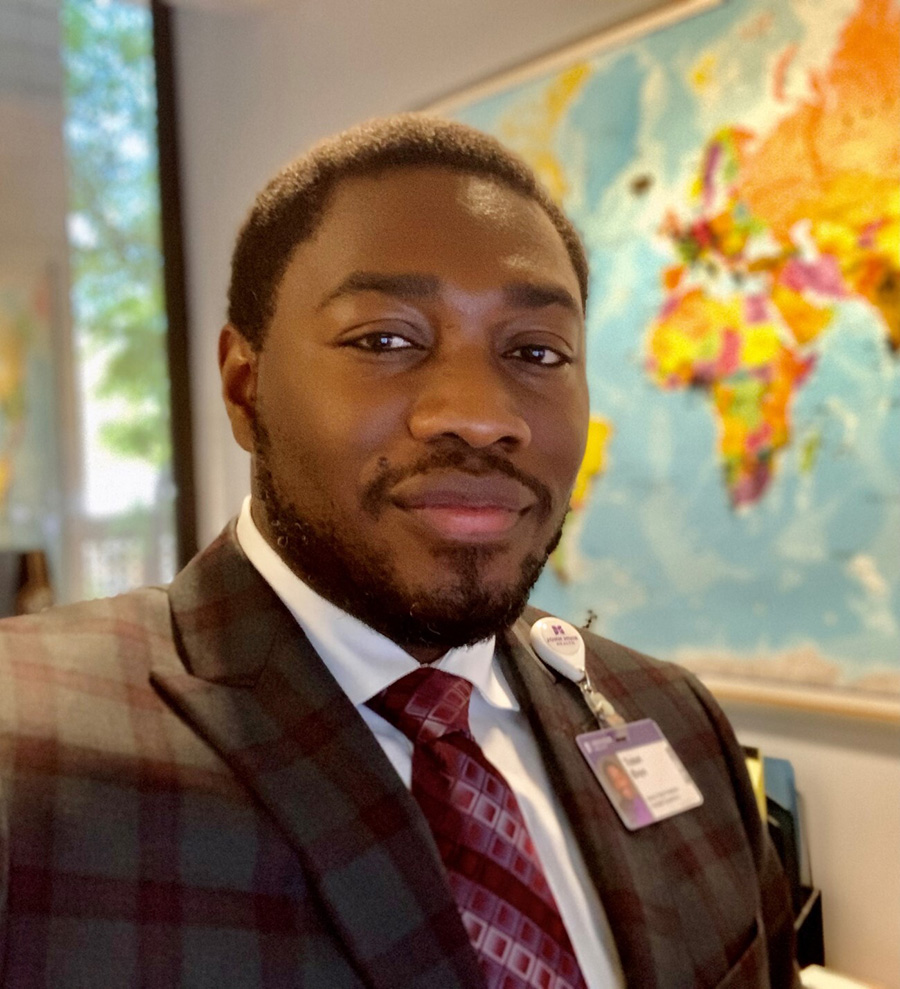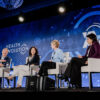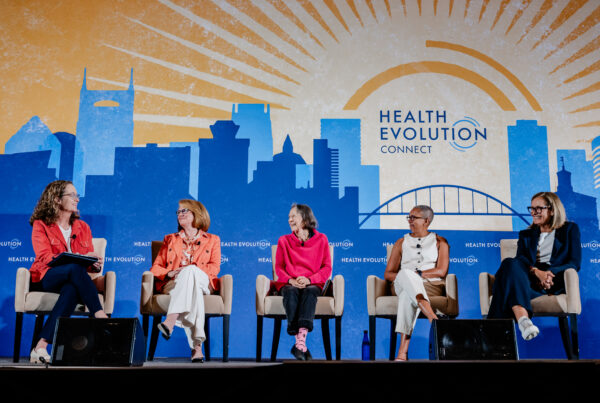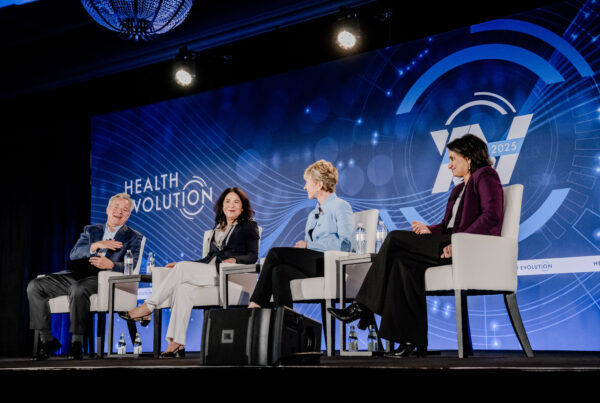Tosan O. Boyo, Senior Vice President of Hospital Operations at John Muir Health, reflects on health workers owning their trauma through the pandemic and the anniversary of George Floyd’s murder.
I was raised by three parents. First, my mother the Clinical Laboratory Scientist in New Jersey; second my father the Family Medicine Physician in Lagos; and third, health care the practice of which has cradled me from childhood to adulthood. One of the few places humans dread with every fiber of their being is hospitals. For me, it’s always been a sacred place, a thread connecting every tapestry of my life. Some of my earliest memories are doing homework at our hospital in Lagos – bouncing from the waiting room, to the Lab to the ED annoying my parents to finish work so we could head home.
In June 1993, Nigeria was engaged in the first democratic election in an era. The leading candidate MKO Abiola was a civilian whose smile lit up rooms and swagger shook concrete. He was a man of the people. The polls and votes foreshadowed an inevitable change of power and he was the presumed winner. The Western world considered the elections the freest and fairest of its time. However, the election was voided and the military held on to power. MKO Abiola was arrested, never seen again and died in prison. I still have vivid memories of rushing from school to my parent’s hospital as riots engulfed streets, red machetes glistened in sunlight, and screams crackled the air as cars met fiery blockades. By the time we reached the hospital, I felt safe because we all knew that violence would never come here. No matter whose side the rioters were on, they respected the place of healing. They or their loved ones would need the hospital today or tomorrow. It was a sacred space.
In January 2021, as I watched the U.S. Capitol insurrection take place, trauma made me a time traveler. How could this be happening in the U.S., my adopted home? I’d known democracy was fragile but didn’t believe it was here. Visions of both my homelands, 28 years apart, imploded within me. Trauma lives in the crevices of fears and memories. It knows your fragility. It knows your truest self. It embraces and transports you across eons before you know you left. Trauma is a tyrant unbound by time and space.
As I traveled back and forth through time, I led the COVID-19 Command Center at John Muir Health. Our teams were performing heroic feats: We were steeped in Surge 3.0, carrying the largest census of COVID-19 patients in the county. Three weeks into vaccines going live, we’d administered over 50 percent of our workforce with first doses. The entire system rallied to fight a battle on two fronts: one of ambulatory prevention and one of acute treatment. As the Capitol was being stormed, health workers never stopped placing their lives on the line for others. This new Surge was ruthless and relentless. Yet I couldn’t help watching the insurrection unfold. Trauma wrenched me back in time to the protests following George Floyd’s murder and contrasted the agonizingly disparate responses. It was the epitome of inequity. I wondered what would have happened if the insurrectionists looked like me. There would be blood. So much blood.
Trauma tore into health workers this past year. We’ve had our feet on the gas and never let up. We’ve become accustomed to death being inches away. We’ve been driving with fumes for so long. We’re only just coming up for air. Spring 2021 has been a period of grace and release. I just got to see my mother for the first time in over a year. As a Clinical Lab Scientist, she belongs among the many unsung heroes in health care. Without CLSs there’s no diagnosis. Without CLSs blood won’t flow. I took my mother out to dinner. The last time we did this was March 2020 exploring the foods and sights of San Francisco. Little did we know the city would shut down a week later and I would be among those weighing that fateful decision. By the time my mother returned to her hospital in New Jersey, she was immediately deployed to support the devastating Surge 1.0 that hit the East Coast.
Back in the present, we caught up over fish and chips exchanging stories about our battles with COVID-19. At a certain point, my mother held a long pause staring into the San Francisco Bay. She talked about the scores of death witnessed, the hours that never seemed to end, the fear of getting infected, the fear of infected co-workers not surviving, the fear of not having enough tests to keep up, the fear for her safety, the fear for mine 3,000 miles away. Her eyes teared up as trauma took her back through time.
As I held my mother, I thought about how health workers waded through these moments. We were bombarded with trauma at work and still suffered the fallout of the pandemic at home. Some drilled into the cracked foundations of their marriages, some wrestled with virtual learning for their kids and some suffered isolation from communities they held dear and yet we all strived to remind everyone that COVID-19 was not political. Most of us never worked from home. Day in, day out, we went into the storm everyone else feared. We lived, mourned and navigated the sea of despair everyone else read about.
In the Bay Area, thousands upon thousands will never know how many of their lives were saved by Health Officers. Through countless and sleepless hours, they harnessed intersectional knowledge of Epidemiology, Medicine and Policy to protect our present and future. In turn, many received incessant abuse and death threats from people that didn’t understand success of public health can also be measured by tragedies we avoid. Those blows landed with trauma, yet they never ever faltered in their duty to protect us. They persisted through it all with science and hope. I worked next to one of them 12 hours a day, every day through the pandemic. Their resilience will never stop inspiring me.
From February to October 2020, I led the Operations for San Francisco’s COVID-19 Command Center. We were over a thousand strong. A phalanx of epidemiologists, nurses, physicians, police, librarians, firefighters, analysts, scientists, educators and operators. We were a highly-efficient engine driven to protect the most vulnerable and mitigate transmission. Acquiring and allocating PPE became the Odyssey. Bringing hospitals, government agencies and community-based organizations together became Westeros. Implementing protocols to contact trace, isolate and quarantine through three surges in the second most densely populated city in the nation became Shakespearean. However, the data points that drove our hourly decisions never stopped being human. The numbers were lives on the brink of loss, families separated, jobs impacted and dreams diminished. At San Francisco’s COVID-19 Command Center, we even had a space to cry. We used it when we got overwhelmed, when fear and fatigue hollowed our minds, and when we needed to pick up shards of ourselves after watching George Floyd being murdered.
His death cloaked Black people in trauma’s embrace taking us to times too raw and freshly buried. My closest friend, like me, is a Black man and Chief Operating Officer. Getting out of his car despite wearing hospital-branded scrubs and having his ID badge visible, he had guns pulled on him by police – for walking in their direction. I shudder at what would have happened if his white co-worker wasn’t close by. This experience occurred at the same time he was serving as the hospital’s incident commander responding to Hurricane Harvey. He had to tuck this trauma away, head back to the hospital and prioritize the needs of thousands as storms ravaged Houston. He still time travels to this moment. Trauma is a tyrant nonchalant to roles, goals and hopes.
As we approach the anniversary of George Floyd’s murder, and the beginning of the end of the pandemic, many of us will time travel. Not just to the 9 minutes and 29 seconds, or to the dozens of other deaths caught on film, but to our own individual near-death-experiences-by-racism. I want to believe things are better now than then. I don’t know, but I hope so. This past year, health systems and health plans embraced Equity as a strategic priority. This is progress, yet there’s still much we can and should do. I hope health care doesn’t lose the fires of innovation we were compelled to discover. I hope health start-ups conceived through the pandemic remember that Black, Hispanic and Native Americans died at exponentially higher rates and incorporate them into the solutions. I hope we all come to realize that equity work is fundamentally quality work. The more we separate these pillars, the more likely we lose sight of why the work matters in the first place.
Health workers need to heal. Heroes need not be invincible and it’s okay to not be okay. We spent the past year fighting excruciating battles and the mental cost is high. Many of us don’t know it. Many of us won’t talk about it. Many of us aren’t ready to face it. We must create spaces to be human. I believe we start this healing journey by accepting our trauma is as real as time itself. As for me, I’m just learning how to stop time traveling.










